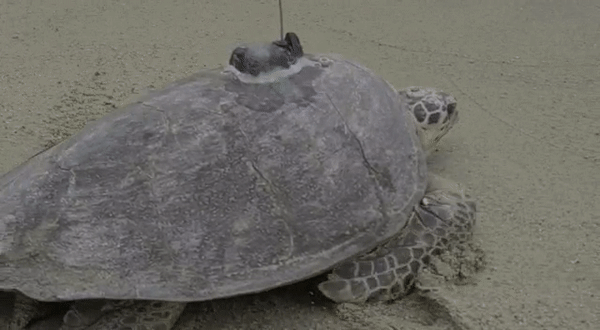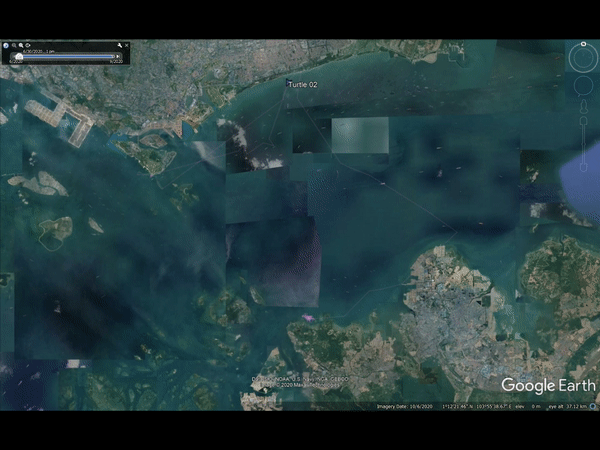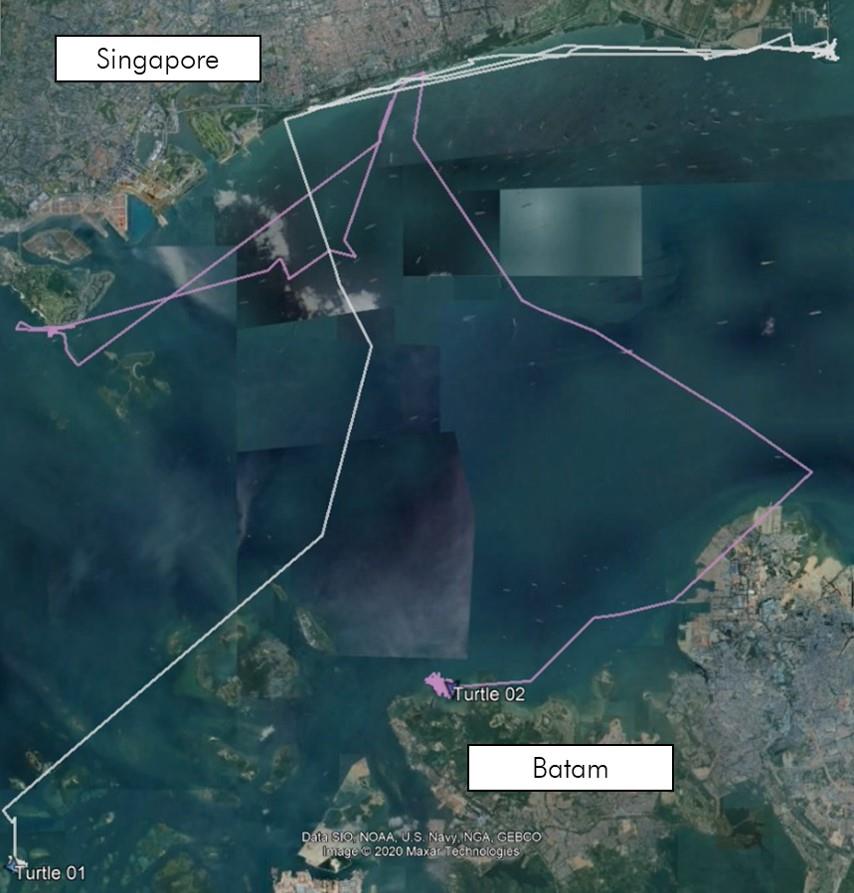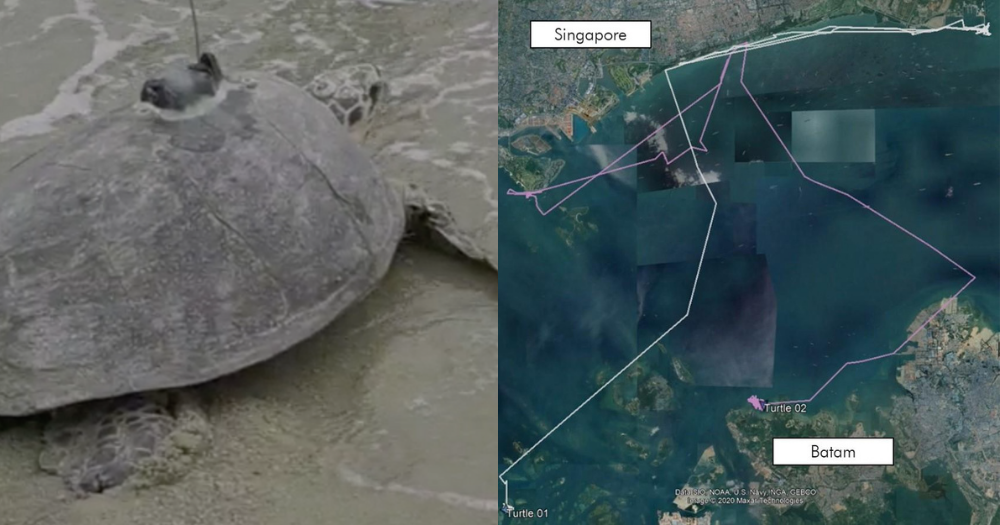Two female Hawksbill turtles carrying satellite trackers on their carapaces have set off from Singapore after nesting at East Coast Park earlier this year.
On Dec. 13, the National Parks Board (NParks) gave an update on the pilot tracking programme, which aims to support conservation efforts by understanding the movements and nesting habits of these critically endangered turtles better.
 Video courtesy of NParks.
Video courtesy of NParks.
How tracking works
When the turtles surface for air, the satellite tags transmit signals to the orbiting satellites.
GPS coordinates can then be generated from the signals.
From the coordinates, researchers will be able to tell the whereabouts of the turtles.
Closer look at travel patterns
Based on the signals recorded so far, the two Hawksbill turtles swam along the eastern shores before leaving Singapore.
Turtle 01 travelled between East Coast Park and Sentosa before moving off, while Turtle 02 went back and forth for quite a bit along the eastern shore (between East Coast Park and Changi Coast Walk) before moving off.
Interestingly, from these two individual Hawksbill turtles alone, one can tell that their travel patterns are quite different.
And that suggests their nesting habits and preferences can be different too.
Here's a snapshot of their journey:
 Video courtesy of NParks.
Video courtesy of NParks.
Now at Batam
The two turtles then travelled to Riau in Indonesia and are now in their feeding grounds off Batam, according to NParks.
 Map showing the route of the two turtles. Image courtesy of NParks.
Map showing the route of the two turtles. Image courtesy of NParks.
This is the first time such data is being recorded in Singapore.
It can help researchers understand the travel patterns of nesting turtles, which will contribute to conservation management and land use planning in Singapore.
What do you do if you see a turtle?
NParks advised members of the public to call NParks helpline (1800-471-7300) if a turtle is spotted.
If you encounter a turtle, do keep their distance and speak softly especially when a nesting turtle is sighted.
Do not use flash photography if you spot a turtle at night and also try to stay out of the turtle's sight.
One should also keep clear of tracks left by the turtle as researchers use the tracks to identify the species of the turtle and to locate the nest.
Citizen science initiative instrumental to conservation efforts
The satellite tracking efforts were made possible with the help of volunteers who took part in the Biodiversity Beach Patrol.
Biodiversity Beach Patrol is a citizen science initiative where the community helps to collect valuable information and report sightings of sea turtles along Changi Beach Park and East Coast Park.
They also help to look out for another endangered species — the horseshoe crabs.
As of December 2020, around 340 volunteers have participated in 255 sessions of Biodiversity Beach Patrols.
We deliver more stories to you on LinkedIn
Top image via NParks.
If you like what you read, follow us on Facebook, Instagram, Twitter and Telegram to get the latest updates.
